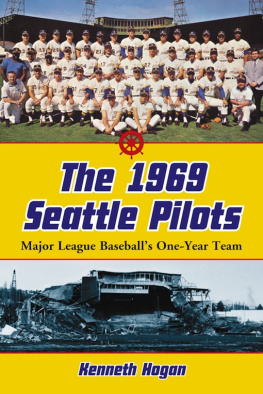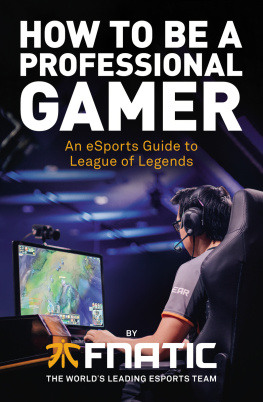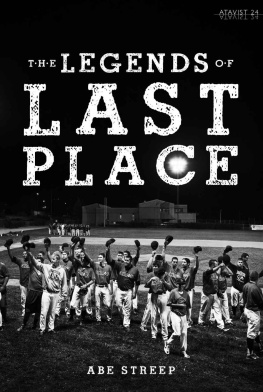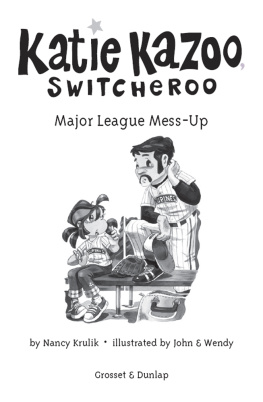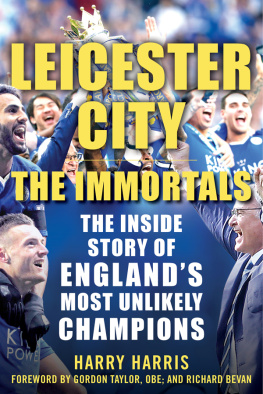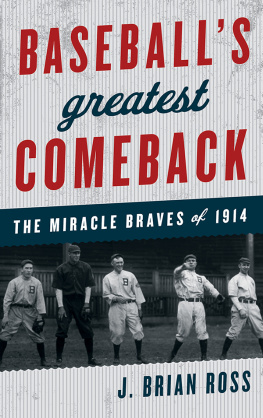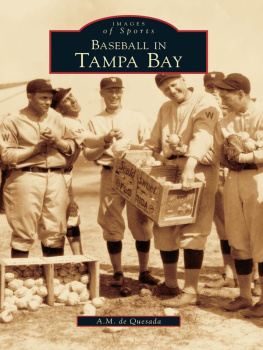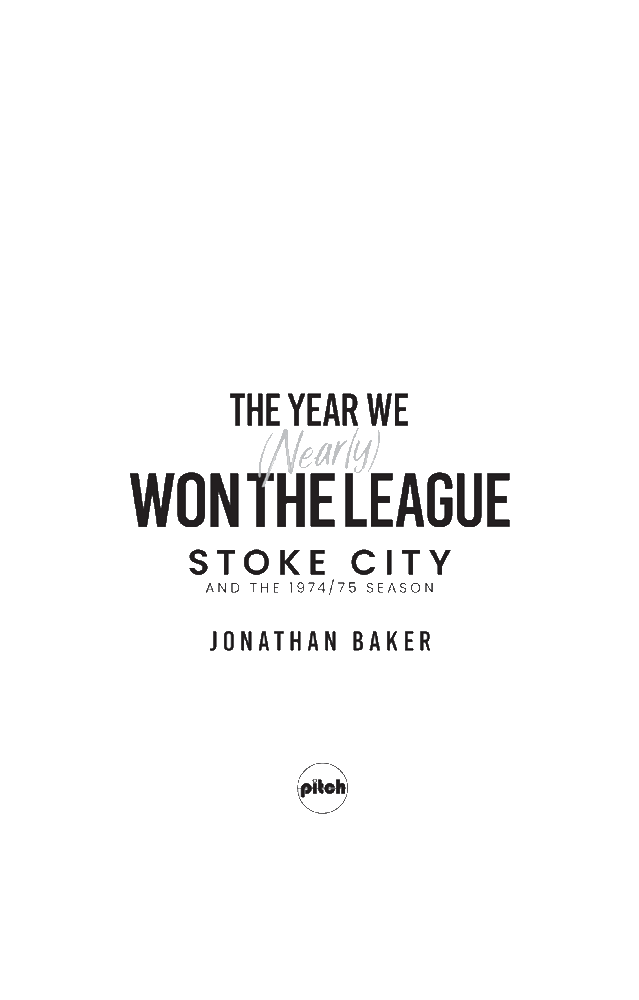Contents
Guide
For my cousin
Jeremy Le Poidevin
First published by Pitch Publishing, 2022
Pitch Publishing
A2 Yeoman Gate
Yeoman Way
Durrington
BN13 3QZ
www.pitchpublishing.co.uk
Jonathan Baker, 2022
Every effort has been made to trace the copyright.
Any oversight will be rectified in future editions at the earliest opportunity by the publisher.
All rights reserved under International and Pan-American Copyright Conventions. By payment of the required fees, you have been granted the non-exclusive, non-transferable right to access and read the text of this e-book on-screen. No part of this text may be reproduced, transmitted, downloaded, decompiled, reverse-engineered, or stored in or introduced into any information storage and retrieval system, in any form or by any means, whether electronic or mechanical, now known or hereinafter invented, without the express written permission of the Publisher.
A CIP catalogue record is available for this book from the British Library
Print ISBN 9781801500548
eBook ISBN 9781801502184
--
eBook Conversion by www.eBookPartnership.com
CONTENTS
FOREWORD
MANY BOOKS have been written about Stoke City Football Club. I can understand the fascination. We are the oldest league club in the world. Our history and heritage are rich. The likes of Stanley Matthews, Neil Franklin and Freddie Steele were household names. Imagine nowadays, three such players coming from one local area, fulfilling their dreams by playing for the club they had idolised as they grew up. It would not happen in todays game. Ironically, Matthews took a little bit longer than the others, as he was a Port Vale fan before joining the ground staff at Stoke City. The three all played for England. They inspired thousands of youngsters to follow their dreams, culminating in four local Stoke boys playing in the League Cup Final at Wembley in 1972.
What happened in the past is pure theatre. Take 1961, when the club were struggling in the old Second Division, and Tony Waddington was persuaded to bring Matthews back from Blackpool, where he was languishing in the reserve team. Considering that Matthews was approaching his 47th birthday, most people inside and outside the game thought Waddo was off his rocker. Crowds were down to 8,000. It was crisis time. The fee was 3,500, and immediately that was repaid because in Stans first game back, the crowd swelled to 36,000. History will tell you that promotion soon followed.
Three 1966 World Cup heroes have graced the Victoria Ground: Gordon Banks, George Eastham and Geoff Hurst. Seven months after beating the mighty Chelsea at Wembley came the tragic accident in which Banks lost his eye. That would cost us in 1974/75, when we should have won the league, as this book describes. Had Banksy still been playing, there is no doubt in my mind that we would have become champions. Then, to rub salt in the wounds, came the collapse of the Butler Street Stand and the break-up of the team that would have gained further honours. Decline quickly followed.
These stories and more are told in this book, many of them described by some of the players who were in the title-chasing team that Tony Waddington built. You will read about how he did it, and how that team so nearly won the greatest prize. Its a great ride. Enjoy it.
Terry Conroy August 2021
1
STUCK WITH STOKE
THE RACE for the First Division title in 1974/75 was one of the tightest there has ever been. The lead at the top of the table changed hands more than 20 times over the course of the season. At the beginning of April, six teams still had a genuine chance of winning, and only a single point covered the top three. The eventual winning points total was the lowest for more than two decades. It was a dynamic and pulsating campaign from start to finish.
Of those top six still battling it out at the death, only Stoke City had never won the championship before. And, as the title of this book suggests, they were destined to come up short once again. In the view of most Stoke fans of any vintage, the team that came so close in the spring of 1975 was the best in the clubs history. In the previous couple of years, that team had won one cup the clubs first major trophy and twice come close to winning another. Now it was involved in a serious tilt at the biggest prize in English football. But after failing narrowly to reach the summit, the descent would be swift and pitiless. Within two years, the architect of the team had gone and many of the players had gone too. Relegation swiftly followed. It was a classic tale of rise and fall.
In following the twists and turns of the 1974/75 season, this book tells several stories. It recounts the tale of Tony Waddington, the manager who revived an unfashionable provincial club that was dying on its feet, and built a team capable of winning trophies and nearly! winning the league. It reflects on the last hurrah of that team, their final thrilling full season together before a freak of nature and financial overstretch sent the club into free-fall. It details a nerve-jangling race to the finish line, with six runners more or less in line abreast as they entered the final straight. And it recalls a vintage era of footballers and of football well within memory, but light years away from the game we know today.
This book is not just for Stokies. It is for every fan of a nearly club one that has never risen to the heights of being named English champions. By my reckoning, that embraces supporters of no fewer than 68 of the 92 clubs that currently sit in the four top tiers of English football. In the 93 seasons of the old First Division, there were only 23 different winners. The Premier League has been even more of a closed shop. In 30 years, there have been just seven different names on the trophy.
That means that nearly four in five league clubs and their supporters have never known what they can only imagine to be the giddy joys of winning the title. The experiences they have all shared, and continue to share, are depressingly familiar ones: hope and disappointment; occasional joy and more frequent despair; anger, frustration and shattered dreams; but always, always, affection and loyalty; and never, never, the smallest suggestion that allegiances might be abandoned or transferred elsewhere.
It was not written in the stars that I would spend my own footballing life as one of this large and permanently exasperated majority following the also-rans. As far as football went, I grew up in a divided household. My mother came from Leek, not far from the Potteries, and we were told that our grandfather had played in goal for Leek FC. His team was Stoke City. The family later moved to Uttoxeter, located at the midway point between Stoke-on-Trent and Derby, and right on the border between Staffordshire and Derbyshire. I was born in Derby, but brought up in Uttoxeter, on the Staffordshire side.
On the other side of the family, my grandmother came from Chellaston, five miles from Derby, and moved with my grandfather to Uttoxeter at about the time my father was born, a century ago. This grandfather was a Londoner, from Dulwich: I dont like to think about who he might have supported. But my father grew up as a Derby County man.



